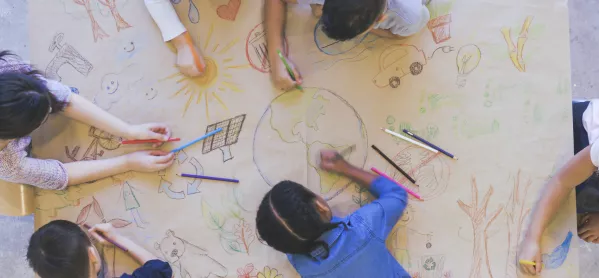The generation going through school just now is absolutely determined to do something about climate change - but how can schools best channel that energy?
Helping students to tackle climate change
Here are five ideas on where to start:
1. Start with the things that schools and local authorities control directly
Invest in insulation and energy-efficiency improvements at school. Install solar panels and perhaps a wind turbine. Edinburgh Community Solar Cooperative is installing solar panels on schools, for example. Investigate if you can use your playing fields as a collector for a ground source heat pump. Greenspace Scotland can advise you on this.
Climate change: ‘Coronavirus has made educators think more globally’
Coronavirus: ‘Thinking globally in schools is essential right now’
Climate change: How (and why) I became a climate change teacher
2. Think about how staff and pupils travel to school
Encourage cycling to school with secure bike stores and cycle proficiency training for children. Campaign for better safe routes to school - the charity Living Streets may be able to help. Ask the local authority to use fuel-efficient or electric buses. Think about school sports activities and other outings (if Covid allows). Use coaches to share travel.
3. Provide dietary information to pupils and campaign for healthy and low-carbon school meals
The two can go hand in hand. Reducing meat and dairy consumption is key to this, but eating fewer processed foods is important, too. Set up a school garden and grow local vegetables if possible. Plant trees, even an orchard, in the school grounds, and do not mow all the grounds.
4. Look beyond geography to the whole curriculum
Climate change, with its impact on society and the physical environment, may find its natural curricular home in geography. However, it is should also be embedded across the school curriculum, in physics, chemistry, biology, economics, maths and statistics. In fact, every subject has a link to climate change. Children need to know the basic scientific facts of what causes climate change, but should also be able to have a reasoned discussion of the global implications and why society is finding them so difficult to deal with. If the solutions were easy, we would have them already, but school can provide a powerful catalyst towards the answers that we need.
5. Put nature front and centre
Myriad ecological emergencies around the world are inextricably linked to the global climate emergency. Children would benefit from being closer to nature and from learning more about nature and biodiversity. Primary school can teach the basic facts and how to observe and identify species. In later years, students can learn about the causes and implications of biodiversity loss and have discussions on how to tackle it.
Pupils do not want to sit back as they see the impact of climate change all around them - and there is so much that teachers can do to help.
Neil Kitching is an author who works with young people and schools to improve understanding of carbon choices. His book Carbon Choices: common-sense solutions to our climate and nature crises, was released last September
